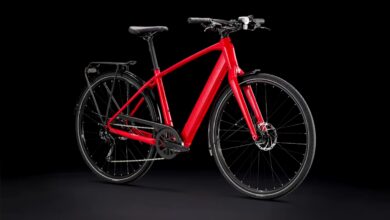Oura Ring 4 Review: A Revolutionary Upgrade or Overhyped Gadget?
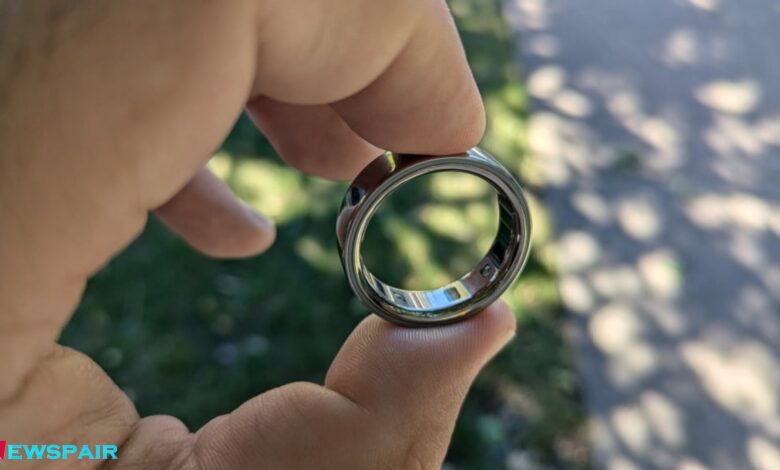
Oura Ring 4 Features, Pricing, and Sizes
The Oura Ring 4 is a smart, app-connected ring that monitors your activity and sleep by tracking various health metrics right from your finger. It utilizes red and green infrared LEDs to measure essential data like blood oxygen levels, heart rate, heart rate variability, and respiratory rate, along with skin temperature sensors and an accelerometer. This sophisticated device is capable of tracking more than 40 types of exercises, your daily activity, sleep patterns, and stages, along with monitoring your stress levels.
All the collected data can be accessed through the Oura app, which is available on both Android and iOS. The app not only presents your metrics but also provides insightful scores for readiness, sleep, and activity, along with personalized recommendations to optimize your daily health routine.
Priced at $349, the Oura Ring 4 is $50 more expensive than its previous model but remains more affordable compared to its leading competitor, the Samsung Galaxy Ring, which is priced at $399.99 and available only on Android. Although Oura offers basic statistics at no cost, a membership is needed to unlock most of the app’s features and detailed insights.. Oura’s subscription costs $5.99 per month or $69.99 annually, after a one-month free trial. In contrast, the Galaxy Ring, despite its higher upfront cost, offers the advantage of not requiring any ongoing subscription fees to access the full range of features in its companion app.
The Oura Ring 4 is offered in 12 sizes (ranging from 4 to 15), an increase from the previous generation, which was available in sizes 6 through 13. In comparison, the Galaxy Ring is available in sizes 5 through 13. When ordering, Oura provides a sizing kit, which the company recommends even for those who have used previous models.

The Oura Ring 4 is now offered exclusively in the Horizon design, which features a smooth, fully rounded exterior. This replaces the older Heritage style, known for its flat-topped look. Shoppers can select from six colors: black, brushed silver, gold, rose gold, silver, and stealth (a dark gray). The base price of $349 applies to black and silver, while brushed silver and stealth are priced at $399, and gold and rose gold cost $499. For this review, I tested the silver version in a size 14.
When it comes to hardware, the Oura Ring 4 makes several improvements over its predecessor, including a flatter interior to reduce the sensor bumps typically found in other smart rings, offering a more comfortable fit. The upgraded sensor technology is designed to continuously find optimal pathways for data collection and adjust to variations if the ring shifts on your finger during the day or night.
According to Oura, the Ring 4 can now detect 18 distinct pathways for data collection, an increase from the previous model’s eight. This enhanced pathfinding aims to reduce inconsistencies and gaps in heart rate readings throughout the day and night, resulting in more accurate data. Additionally, this new design is more energy-efficient, helping to extend the battery life.
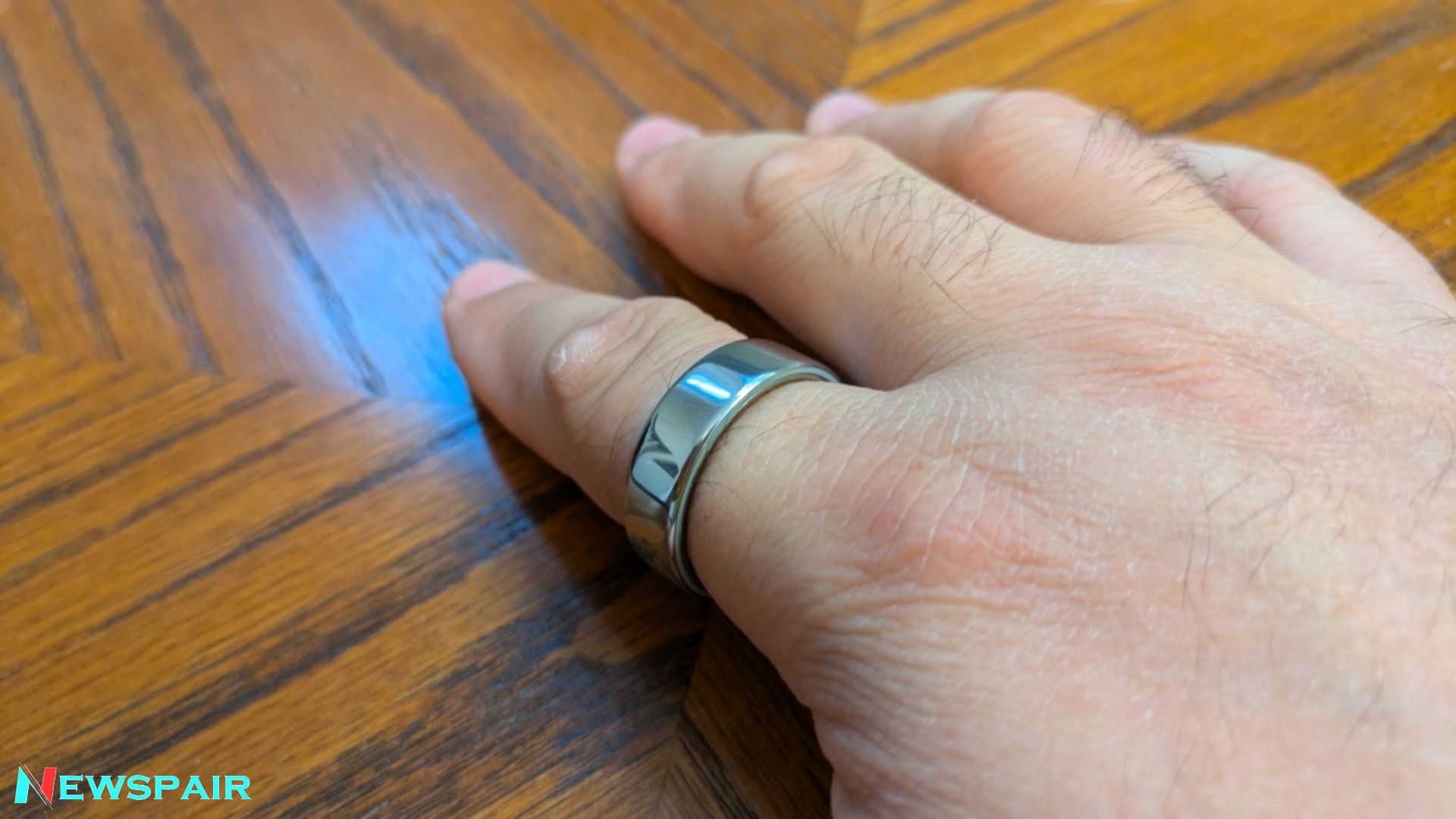
The launch of the Oura Ring 4 comes alongside a completely redesigned version of the Oura app, offering a refreshed and more intuitive user experience. The redesigned interface is divided into three main sections: the Today tab, which displays real-time insights; the Vitals tab, offering essential health metrics; and the My Health tab, which focuses on long-term trends and goals. The app now includes new features such as advanced stress management tools and heart rate zone analysis.
Another major update is the expansion of the Labs hub—a space for testing early-access features—which is now available on Android as well as iOS. Through this platform, Oura has rolled out new insights like cardiovascular age, cardio capacity, and stress resilience, along with a new AI-driven advisor that delivers tailored health recommendations.
Refined Design
Apart from a small notch on the underside, the Oura Ring 4 closely resembles a traditional piece of jewelry. Oura suggests positioning the notch downward on one of your middle three fingers, but there’s no need to worry if it shifts—thanks to enhanced sensors, the ring can handle up to a 30-degree rotation without compromising accuracy.
During testing, I switched between wearing it on my right index and middle fingers and saw no noticeable difference in the data. I appreciated the sleek, minimalist appearance of the silver model, and the absence of internal sensor bumps allowed it to rest smoothly against my skin, adding to both its comfort and visual appeal.
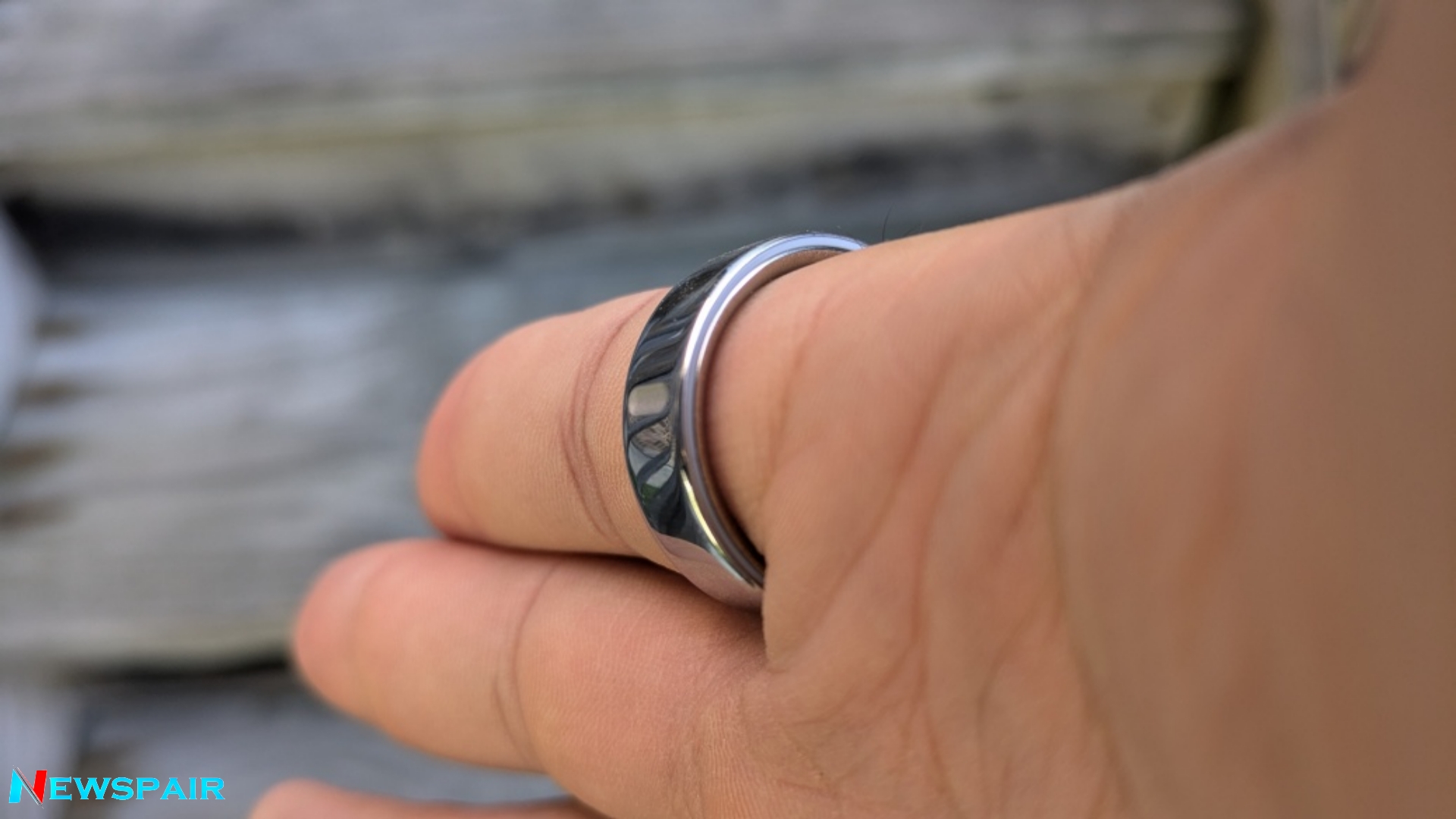
The bulkier build of the previous Oura Ring could feel uncomfortable, especially during activities like gripping a dumbbell. However, during my ten-day trial with the Ring 4, I experienced no such issues—in fact, I frequently forgot I was even wearing it throughout the day.
On the inside, the Oura Ring 4 still reveals its smart functionality, featuring sensor windows and small notches. Running a finger along the inner surface reveals tiny bumps, but they’re far less pronounced than before, now just 0.3mm in height, compared to 1.3mm on the earlier version, making them barely noticeable.
Setting Up the Oura Ring 4
Inside the Oura Ring 4 packaging, you’ll find the ring itself, a charging dock, a USB cable (note: no power adapter is included), and a quick-start guide with instructions for downloading the app and helpful tips for getting started.
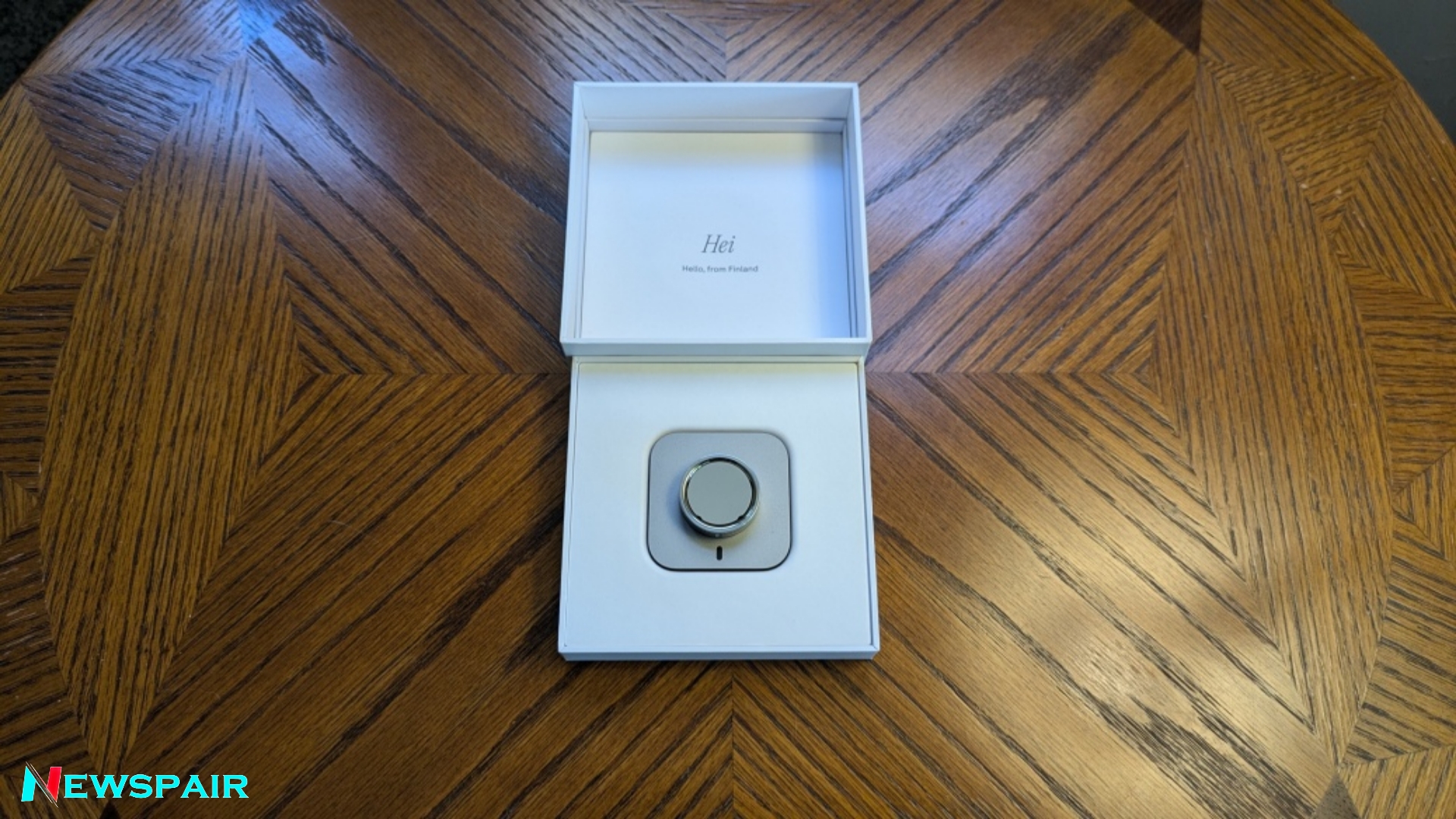
Charging the Oura Ring 4 is easy—just connect the charging dock and match the ring’s notch with the one on the stand. Once aligned correctly, it fits into place smoothly. Once placed on the charger, the ring powers on, and you’ll need to open the Oura app to begin syncing and complete the initial setup.
Within the app, if you’re a new user, you’ll be prompted to create an account. After entering your email, the app will redirect you to your browser to add subscription billing details. Once that’s done, you’ll return to the app and provide basic personal information—including your birth date, weight, and sex assigned at birth (male, female, or other)—to help the ring personalize your health metrics.
The app also offers the option to enable notifications and sync data with your phone’s default health platform, enhancing the overall accuracy and completeness of your wellness insights.
Battery Life
A major advantage of a screenless fitness tracker like the Oura Ring 4 is its impressive battery life. Oura claims it can last for up to eight days on a single charge. In my experience, it nearly met that mark—I placed it on the charger after seven days and six hours, with 11% battery remaining. The app sent a push notification when the battery dropped to 20%, suggesting I recharge it before bedtime. I plugged it in around 10 p.m., and it reached a full charge in just 80 minutes.

The previous version of the Oura Ring also didn’t quite meet the seven-day battery life estimate, lasting around six days in our tests. Similarly, the Samsung Galaxy Ring lasted only six days. However, the Oura Ring 4 outperforms both, offering the best battery life of the group.
This extended battery life is a significant advantage, as it allows the Oura Ring 4 to continuously monitor your heart rate and other metrics without frequent data gaps. This is a key difference compared to screened fitness trackers and smartwatches, which tend to require more frequent charging. For reference, the Fitbit Charge 6 lasted just three days on a charge during testing, and most smartwatches need to be charged daily or every other day, even with power-saving features.
Holistic Guidance
Because the Oura Ring 4 doesn’t have a screen, all interactions happen through the Oura app. Once set up, you’ll be able to immediately view your heart rate and sleep score after a single night of wear. However, other metrics take some time to gather. Readiness and activity recommendations require a day to calibrate, while stress levels take about five days. Certain metrics, such as cardiovascular age, stress resilience, and sleep consistency, may take up to two weeks to fully populate.
Upon opening the app, you’ll land on the Today tab, which showcases dynamic windows designed to highlight the most important information in real time. At the top, you’ll always find your readiness score, a simple number between 1 and 100 that summarizes all your data. Additionally, it displays your sleep score from the previous night, your current activity score, and your most recent heart rate measurement.
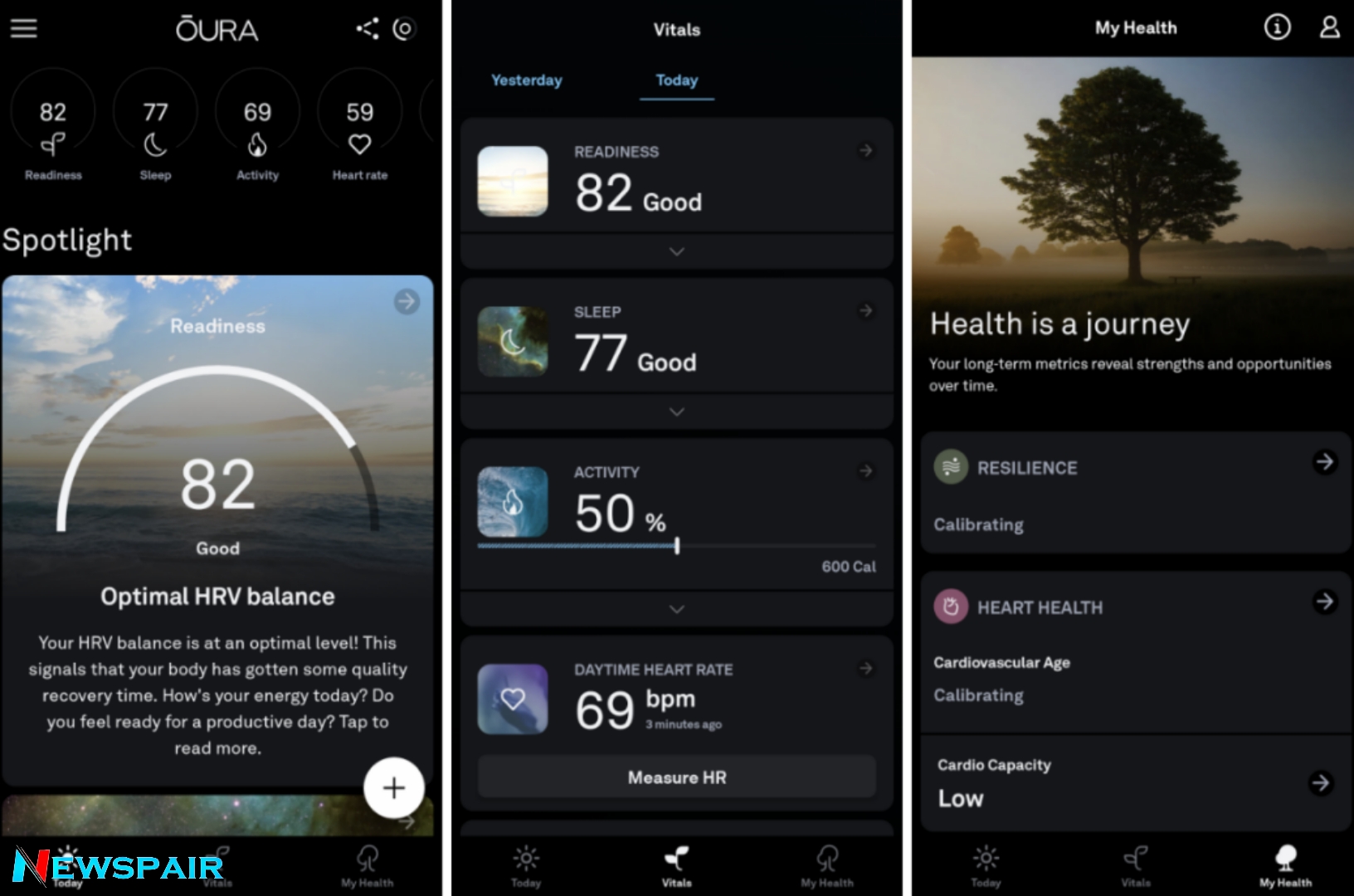
The Vitals tab repeats the key numbers displayed at the top of the Today tab but allows you to explore more details. By tapping any of the numbers, you can view charts showing data collected over time and the factors influencing each score. You can also take a quick heart rate measurement from this screen with a button.
The My Health tab focuses on long-term stats such as cardio capacity, cardiovascular age, and sleep regularity, presented in charts that track these metrics over extended periods. You also have the option to download and share these charts with your doctor.
Oura’s Health Assessments
The Oura app has consistently offered comprehensive health insights through scores for readiness, activity, and sleep. Over time, these scores have become more refined, with the addition of AI-driven guidance and new features that enhance their accuracy.
Readiness considers several factors, including resting heart rate, sleep patterns, and activity levels. During my testing, consistent sleep helped me maintain a score in the 80s. My highest score of 91 occurred after I got extra sleep on a Saturday morning following a workout the day before. However, my lowest score of 73 occurred the following day after a laid-back day and a night of restless sleep.
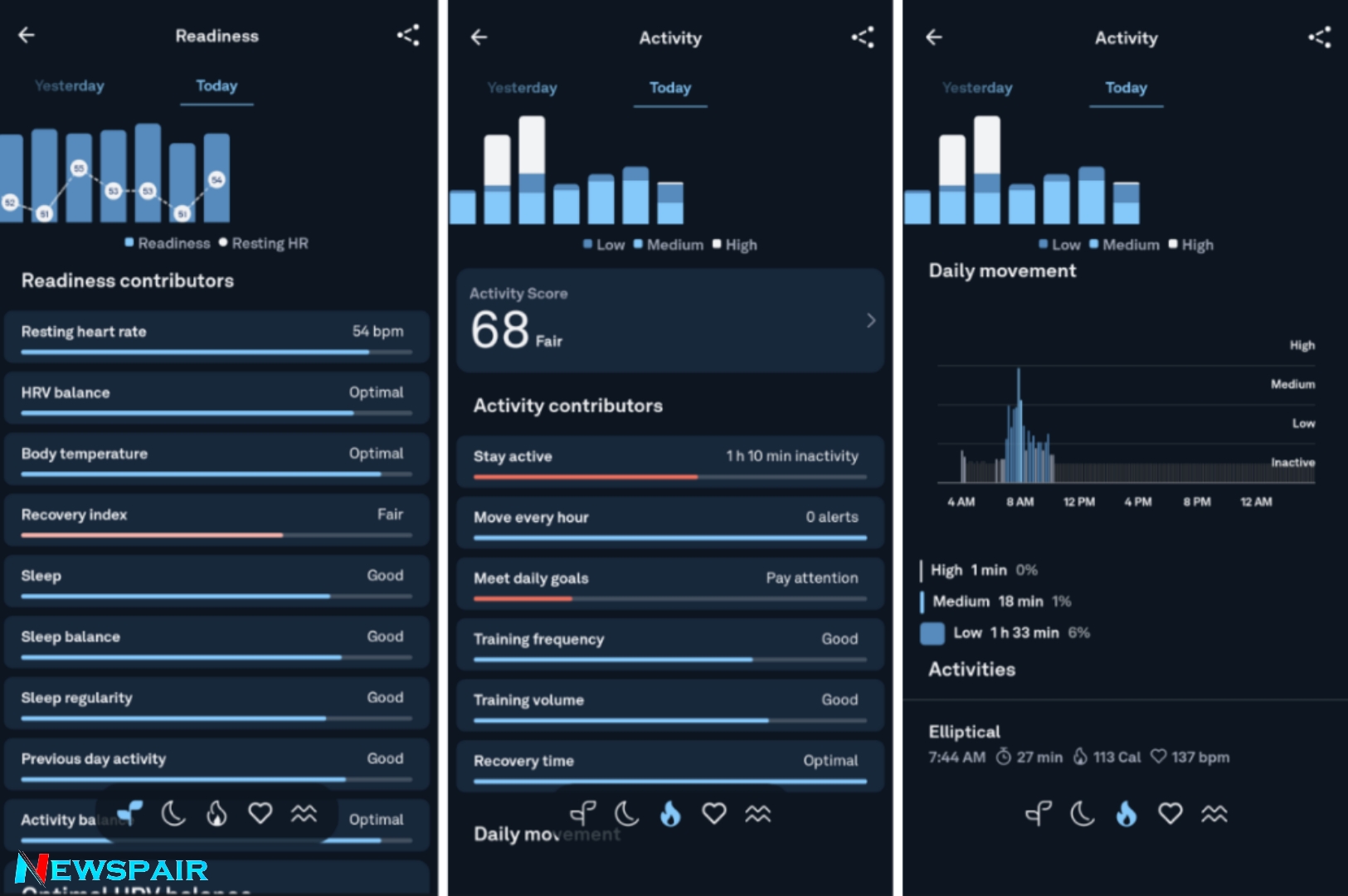
By tapping on the activity score, you can view more details. Unlike the readiness score, which remains a fixed value, the activity score fluctuates throughout the day depending on your movement. The Oura Ring 4 diligently tracks all kinds of activity, from simply moving around the house to going for a walk or doing household chores. I appreciated the reassurance that I wasn’t being entirely inactive on days when I couldn’t fit in a workout. I’m sure my cats are thankful when I clean their food and litter areas, and now I have an extra bit of positive feedback for those tasks.
In the activity tab, you’ll find bar graphs similar to those in the readiness section, highlighting contributors and marking areas you should focus on in red. Staying active during the workday can be tough for me due to long periods of sitting, and this page points out those inactivity gaps. The app also sends me occasional push notifications, nudging me to move after sitting for a while. The data in this tab is broken down into charts that show the time spent in high, medium, and low activity levels, which I find useful. On several occasions, I’ve been able to hit my goals simply by taking a walk around the neighborhood.
Broad But Accurate Exercise Tracking
The Oura Ring 4 now automatically tracks 40 different types of exercises, an increase from the 30 tracked by its predecessor. For each exercise, the ring monitors your calorie burn, intensity level, and the duration of your workout. If you have your phone with you during an outdoor run or walk, it will also record your distance, average pace, and provide a map of your route.
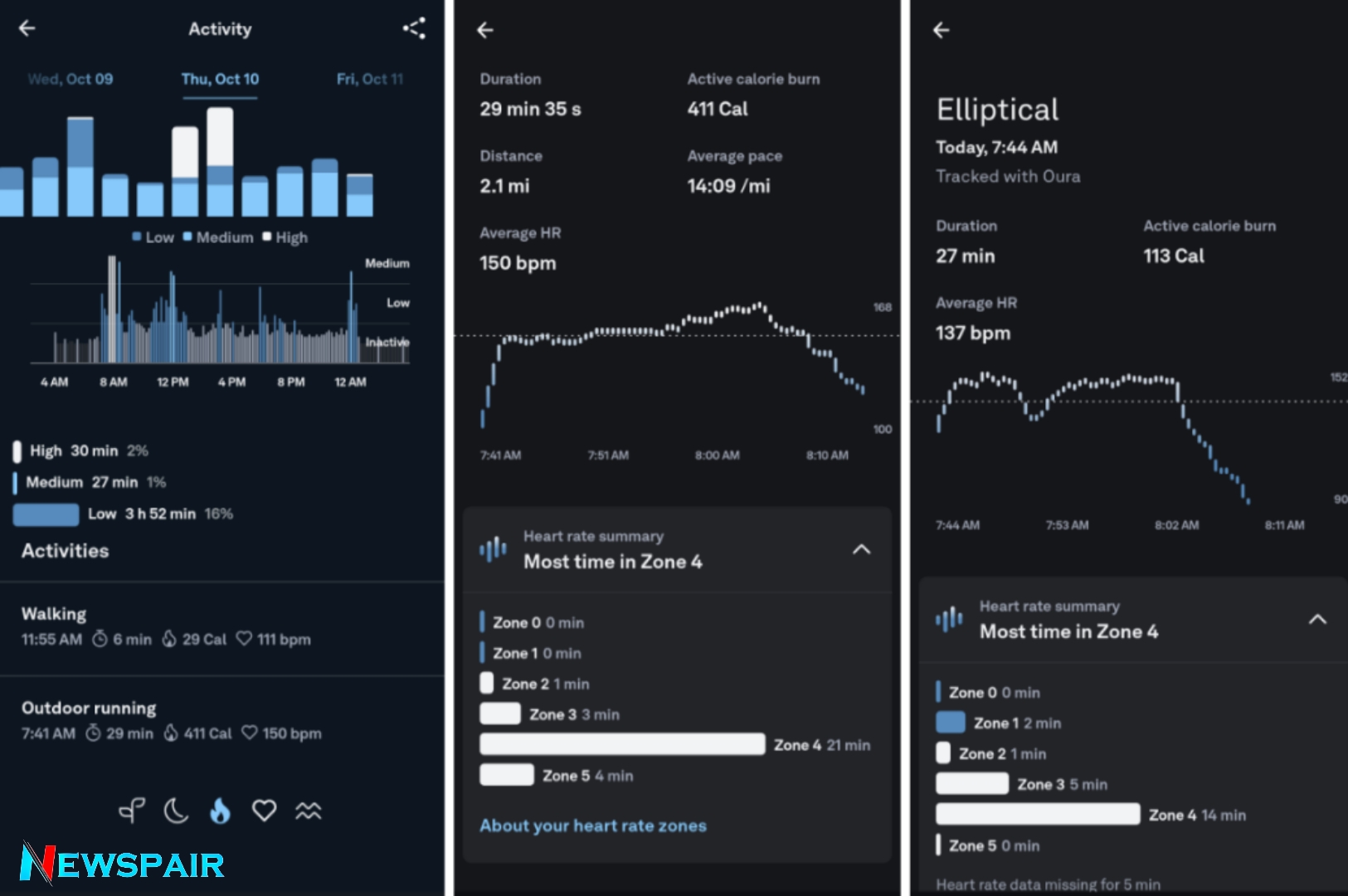
If your goal is to generally improve your health, the Oura Ring 4 provides plenty of valuable data. However, if you’re seeking more detailed insights into specific workouts, you’ll need to opt for a wrist-based fitness tracker or smartwatch. For example, the Apple Watch Series 10, Galaxy Watch 7, and Pixel Watch 3 track advanced metrics for running, including cadence, ground contact time, power, and vertical oscillation. Additionally, devices with screens are more convenient during workouts, allowing you to check your current heart rate without needing to pull out your phone.
Getting Detailed With Sleep and Stress
The Oura Ring 4 excelled at monitoring my sleep. It measures a range of factors, including sleep duration, efficiency, latency, restfulness, time spent awake in bed, sleep timing, and the duration spent in each sleep stage. It also tracks health metrics such as average heart rate variability, blood oxygen saturation, breathing regularity, and resting heart rate. By evaluating all of these factors, the ring provides a sleep score along with a personalized assessment.
The data collected by the Oura Ring 4 generally aligned with the readings from the Nest Hub on my nightstand and the Apple Watch Ultra 2 on my wrist. Oura typically recorded slightly less sleep than the Nest Hub, but was closely in sync with the Ultra 2. This makes sense, as the devices worn on my body were more accurate in detecting when I actually fell asleep, rather than just when I was still.

I also found the stress tracking on the Ring 4 to be both detailed and helpful. It accurately reflected my experiences, showing my stress levels as engaged during work and meetings. It spiked to Stressed during workouts or while watching an intense playoff baseball game, then dropped to Relaxed or Restored as I unwound in the evening and played video games
Verdict: The Best Smart Ring
The Oura Ring 4 combines comfort with a week-long battery life, effectively tracking your activity, sleep, and stress levels. Its companion app provides useful insights into both daily goals and overall health. Although the Galaxy Ring offers a no-fee option for Samsung users, it doesn’t provide as many features as the Oura Ring 4. While devices like the Apple Watch Series 10 or the Fitbit Charge 6 offer in-depth tracking, they don’t match the Oura Ring 4’s comfort or extended battery life. Because of this, the Oura Ring 4 stands out as one of the leading holistic health trackers and earns our Editors’ Choice award for smart rings.


